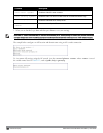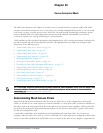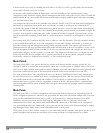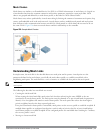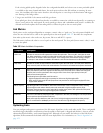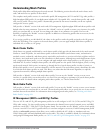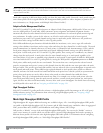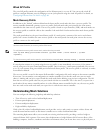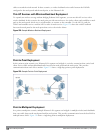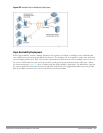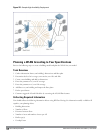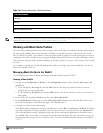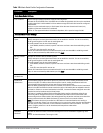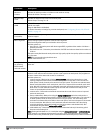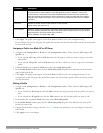
446 | SecureEnterpriseMesh DellPowerConnectW-SeriesArubaOS6.2 | User Guide
cable to extend the wired network. In these scenarios, a wireless backhaul carries traffic between the Dell APs
configured as the mesh portal and the mesh point, to the Ethernet LAN.
Thin AP Services with Wireless Backhaul Deployment
To expand your wireless coverage without bridging Ethernet LAN segments, you can use thin AP services with a
wireless backhaul. In this scenario, the mesh point provides network access for wireless clients and establishes a mesh
path to the mesh portal, which uses its wired interface to connect to the controller. Use the 802.11g radio for
WLAN and controller services and the 802.11a radio for mesh services. Figure 128 shows the wireless backhaul
between the mesh portal to the mesh point that services the wireless clients.
Figure 128: Sample Wireless Backhaul Deployment
Point-to-Point Deployment
In this point-to-point scenario, two Ethernet LAN segments are bridged via a wireless connection that carries both
client services traffic and mesh-backhaul traffic between the mesh portal and the mesh point. This provides
communication from one LAN to another. Figure 129 shows a single-hop point-to-point deployment.
Figure 129: Sample Point-to-Point Deployment
Point-to-Multipoint Deployment
In a point-to-multipoint scenario, multiple Ethernet LAN segments are bridged via multiple wireless/mesh backhauls
that carry traffic between the mesh portal and the mesh points. This provides communication from the local LAN to
multiple remote LANs. Figure 130 shows a single-hop point-to-multipoint deployment.



